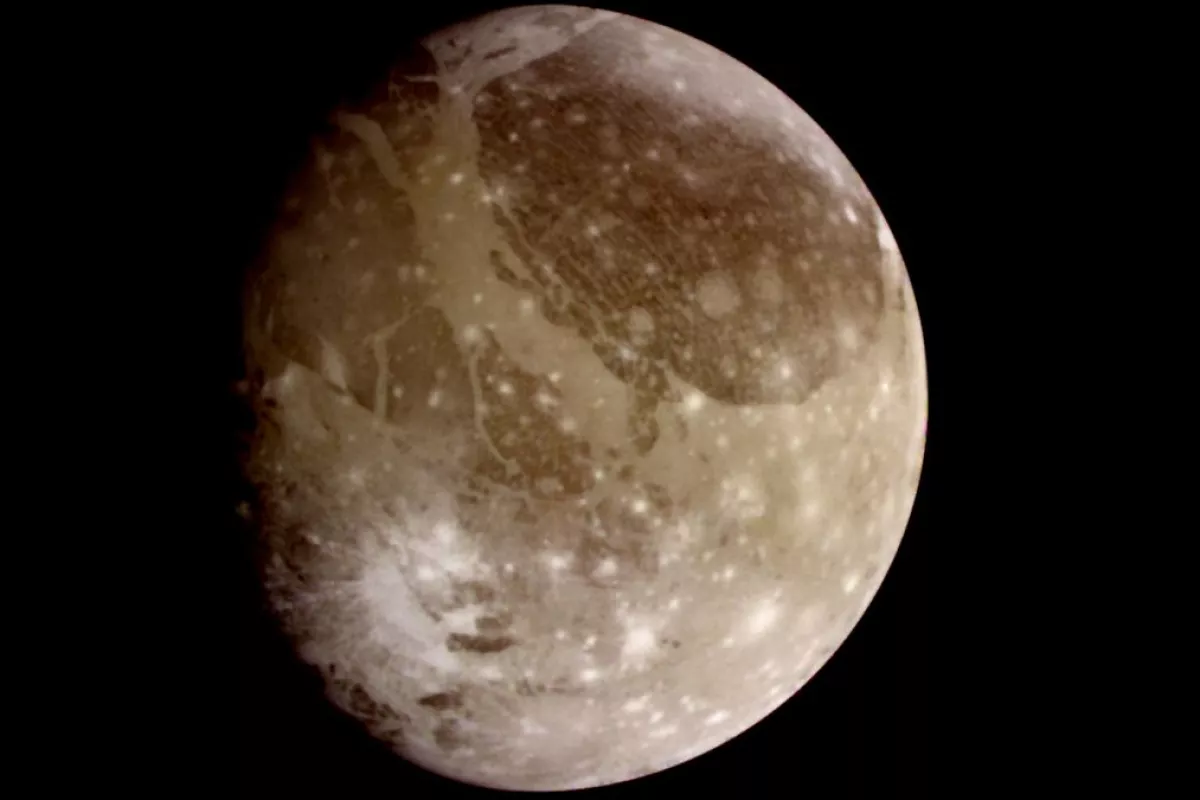The largest moon in our solar system may have been knocked off its axis and cracked like an egg four billion years ago by an asteroid bigger than the one that wiped out the dinosaurs on Earth at the end of the Cretaceous age.
Discovered by Galileo in 1610 while he was messing about with his new telescope, Ganymede is not only the largest moon of the planet Jupiter, but the largest in the solar system. In fact, it's larger than the planet Mercury. Since it was first visited by Pioneer 10 in December 1973, subsequent missions have found that it's the only moon with a magnetic field, it has an outer crust of ice, and may have a vast ocean beneath its frozen surface that could support life.
However, there's one distinct feature that has puzzled scientists. The surface of Ganymede is fractured with concentric rings that date from very early in the moon's history and spreading across whole regions. These rings converge on a spot at 21° S 179° W, which is believed to be the site of a massive asteroid impact about four billion years ago.

This impact that caused Ganymede to shatter hasn't left an obvious crater because it basically splashed the surface, which filled in the hole soon afterward.
And that's where things get interesting.
According to planetologist Hirata Naoyuki of Kobe University in Japan, this impact didn't just smash the moon, it created a gravitational anomaly that threw Ganymede off balance, tilting it on its axis. While the impact point was, in the ancient past, near the moon's north pole, the imbalance tilted it until the impact zone is now in the southern midlatitudes.

Even more curious, the site is immediately south of what is called the tidal axis. Like our Moon, Ganymede is locked by the tidal forces of Jupiter so one side always faces the planet. The impact site is south of the farthest point on the far side from Jupiter, suggesting that the impact spot is acting like a kind of counterbalance
By using computer simulations and comparing the Ganymede impact to similar ones found on Pluto and the Jovian moon Callisto, Hirata was able to calculate that the object that struck Ganymede had a diameter of 300 km (190 miles) and weighed 20 times as much as the one that hit Earth 65 million years ago and gave the dinosaurs a very bad day. It also left a temporary crater 1,400 to 1,600 km (870 to 990 miles) across.
"I want to understand the origin and evolution of Ganymede and other Jupiter moons," said Hirata. "The giant impact must have had a significant impact on the early evolution of Ganymede, but the thermal and structural effects of the impact on the interior of Ganymede have not yet been investigated at all. I believe that further research applying the internal evolution of ice moons could be carried out next."
The research was published in Scientific Reports.
Source: Kobe University








